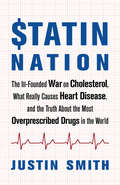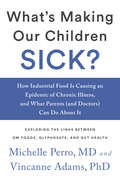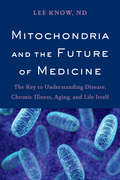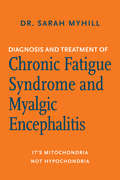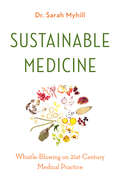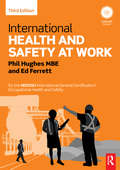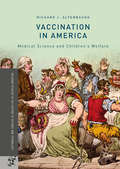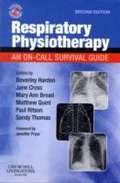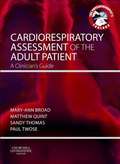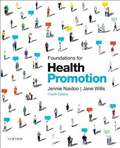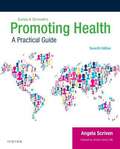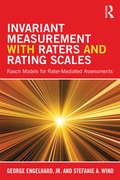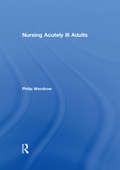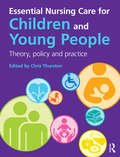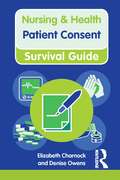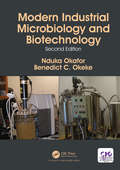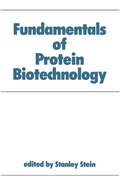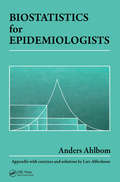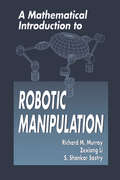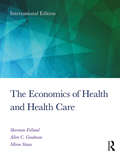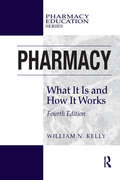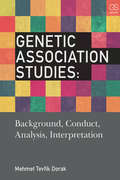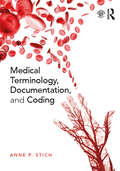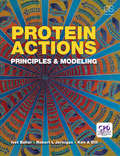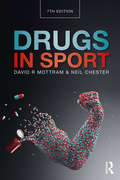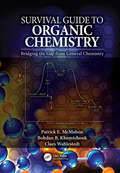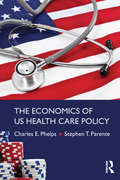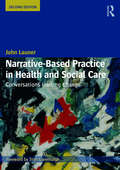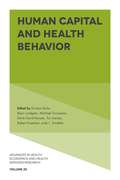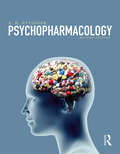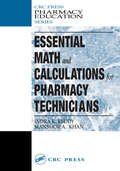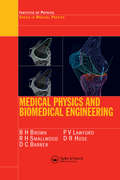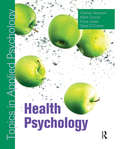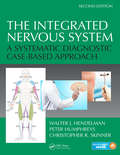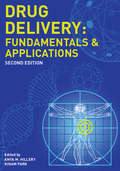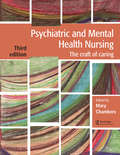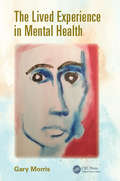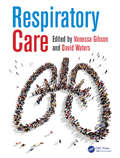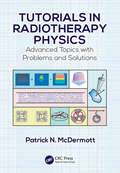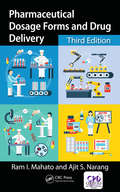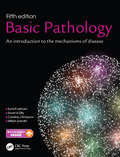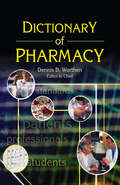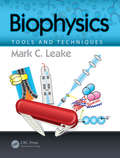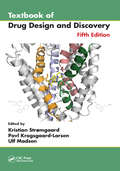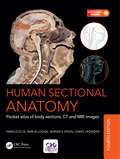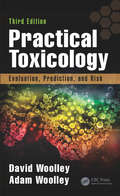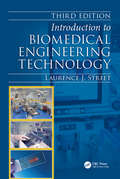Statin Nation: The Ill-Founded War on Cholesterol, What Really Causes Heart Disease, and the Truth About the Most Overprescribed Drugs in the World
by Justin SmithHeart disease is the leading cause of death worldwide, and for decades conventional health authorities have pushed that the culprits are fat and cholesterol clogging up coronary arteries. Consequently, lowering cholesterol has become a hugely lucrative business, and cholesterol-lowering Statin drugs are now the most prescribed medication in the world, with clinical data showing one billion people eligible for prescription. However, these cholesterol guidelines have been heavily criticized, and increasingly, doctors and researchers have been questioning the role cholesterol plays in heart disease. We now know that people with heart disease often do not, in fact, have high cholesterol, and even the strongest supporters of the cholesterol hypothesis now admit that no ideal level of cholesterol can be identified. Large-scale studies have proven that statins are not generating the benefits that were predicted, and new research shows that high cholesterol may actually prevent heart disease. Worse still, millions of people in the United States and worldwide are taking statins preventatively, at great cost to their health. A complete reevaluation of the real causes of heart disease is long overdue, not to mention an inquiry into why the pharmaceutical industry continues to overprescribe statins (and market them aggressively to consumers) despite this evidence. Statin Nation offers a new understanding of heart disease, and Justin Smith forges an innovative path away from the outdated cholesterol myth with a viable alternative model to address the real causes of heart disease. Statin Nation provides detailed examinations of nutritional alternatives that are up to six times more effective than statins, and other interventions that have been shown to be up to eleven times more effective than statins. But all of these methods are currently ignored by health authorities. Smith provides a heart disease prevention plan that anyone can use, providing hope for the future of heart-disease treatment with a purpose.
What's Making Our Children Sick?: How Industrial Food Is Causing an Epidemic of Chronic Illness, and What Parents (and Doctors) Can Do About It
by Vincanne Adams Dr Michelle PerroExploring the links between GM foods, glyphosate, and gut health With chronic disorders among American children reaching epidemic levels, hundreds of thousands of parents are desperately seeking solutions to their children’s declining health, often with little medical guidance from the experts. What’s Making Our Children Sick? convincingly explains how agrochemical industrial production and genetic modification of foods is a culprit in this epidemic. Is it the only culprit? No. Most chronic health disorders have multiple causes and require careful disentanglement and complex treatments. But what if toxicants in our foods are a major culprit, one that, if corrected, could lead to tangible results and increased health? Using patient accounts of their clinical experiences and new medical insights about pathogenesis of chronic pediatric disorders—taking us into gut dysfunction and the microbiome, as well as the politics of food science—this book connects the dots to explain our kids’ ailing health. What’s Making Our Children Sick? explores the frightening links between our efforts to create higher-yield, cost-efficient foods and an explosion of childhood morbidity, but it also offers hope and a path to effecting change. The predicament we now face is simple. Agroindustrial “innovation” in a previous era hoped to prevent the ecosystem disaster of DDT predicted in Rachel Carson’s seminal book in 1962, Silent Spring. However, this industrial agriculture movement has created a worse disaster: a toxic environment and, consequently, a toxic food supply. Pesticide use is at an all-time high, despite the fact that biotechnologies aimed to reduce the need for them in the first place. Today these chemicals find their way into our livestock and food crop industries and ultimately onto our plates. Many of these pesticides are the modern day equivalent of DDT. However, scant research exists on the chemical soup of poisons that our children consume on a daily basis. As our food supply environment reels under the pressures of industrialization via agrochemicals, our kids have become the walking evidence of this failed experiment. What’s Making Our Children Sick? exposes our current predicament and offers insight on the medical responses that are available, both to heal our kids and to reverse the compromised health of our food supply.
Mitochondria and the Future of Medicine: The Key to Understanding Disease, Chronic Illness, Aging, and Life Itself
by Lee KnowWith information for patients and practitioners on optimizing mitochondrial function for greater health and longevity Why do we age? Why does cancer develop? What's the connection between heart failure and Alzheimer's disease, or infertility and hearing loss? Can we extend lifespan, and if so, how? What is the Exercise Paradox? Why do antioxidant supplements sometimes do more harm than good? Many will be amazed to learn that all these questions, and many more, can be answered by a single point of discussion: mitochondria and bioenergetics. In Mitochondria and the Future of Medicine, Naturopathic Doctor Lee Know tells the epic story of mitochondria, the widely misunderstood and often-overlooked powerhouses of our cells. The legendary saga began over two billion years ago, when one bacterium entered another without being digested, which would evolve to create the first mitochondrion. Since then, for life to exist beyond single-celled bacteria, it's the mitochondria that have been responsible for this life-giving energy. By understanding how our mitochondria work, in fact, it is possible to add years to our lives, and life to our years. Current research, however, has revealed a dark side: many seemingly disconnected degenerative diseases have tangled roots in dysfunctional mitochondria. However, modern research has also endowed us with the knowledge on how to optimize its function, which is of critical importance to our health and longevity. Lee Know offers cutting-edge information on supplementation and lifestyle changes for mitochondrial optimization, such as CoQ10, D-Ribose, cannabinoids, and ketogenic dietary therapy, and how to implement their use successfully. Mitochondria and the Future of Medicine is an invaluable resource for practitioners interested in mitochondrial medicine and the true roots of chronic illness and disease, as well as anyone interested in optimizing their health.
Diagnosis and Treatment of Chronic Fatigue Syndrome and Myalgic Encephalitis: It's Mitochondria, Not Hypochondria
by Sarah MyhillMitochondria are the powerhouses of our cells, essential for the production and management of energy at the cell level. Dr. Sarah Myhill has spent years studying the relationship between mitochondrial malfunction and one of the most common problems that leads people to the doctor’s office: fatigue. In Diagnosis and Treatment of Chronic Fatigue Syndrome and Myalgic Encephalitis, Dr. Myhill examines this essential role of our mitochondria in energy production and why it is key to understanding and overcoming Chronic Fatigue Syndrome (CFS) and the inflammation that often accompanies it: Myalgic Encephalitis (ME). She explains the importance of healthy mitochondria, how we can assess how well they are functioning, what we can do to keep them healthy, and how to restore them to health if problems arise. Since publication of the first edition in 2014, new research and new clinical findings have shed further light on a condition that is debilitating to those who suffer from it, but “all in the head” to many doctors. The second edition of this groundbreaking book includes new insights and chapters on why CFS/ME is the most poorly treated condition in Western medicine, the role of the gut, allergy and autoimmunity, Lyme disease and other coinfections, reprogramming the immune system, reprogramming the brain, and the roadmap to recovery.
Sustainable Medicine: Whistle-Blowing on 21st-Century Medical Practice
by Sarah MyhillSustainable Medicine is based on the premise that twenty-first century Western medicine—driven by vested interests—is failing to address the root causes of disease. Symptom-suppressing medication and “polypharmacy” have resulted in an escalation of disease and a system of so-called “health care,” which more closely resembles “disease care.” In this essential book, Dr. Sarah Myhill aims to empower people to heal themselves by addressing the underlying causes of their illness. She presents a logical progression from identifying symptoms, to understanding the underlying mechanisms, to relevant interventions and tests and tools with which to tackle the root causes. As Myhill writes, “It’s all about asking the question ‘why?’” Sustainable Medicine covers a wide range of symptoms including inflammation (infection, allergy, autoimmunity), fatigue, pain, toxic symptoms, deficiency symptoms, and hormonal symptoms. And Dr. Myhill includes a toolbox of treatments for specific illnesses and ailments, as well as a general approach to avoiding and treating all disease. Finally, she offers a series of case histories to show how people have successfully taken control of their health and healed even in the face of the most discouraging symptoms—all without the harmful interventions of 21st century Western medicine.
International Health and Safety at Work: for the NEBOSH International General Certificate in Occupational Health and Safety
by Phil Hughes Ed FerrettInternational Health and Safety at Work has been specially written in simple English for the thousands of students who complete the NEBOSH International General Certificate in Health and Safety each year. Fully revised in alignment with the April 2015 syllabus, this third edition provides students with all they need to tackle the course with confidence. Clear, easily accessible information is presented in full colour, with discussion of essential principles such as ILO and OSH conventions as well as legal frameworks from a range of countries. Aligned to the NEBOSH International General Certificate in Occupational Health and Safety Practice questions and answers to test knowledge and increase understanding Complete with a companion website containing extra resources for tutors and students at www.routledge.com/cw/hughes The only textbook endorsed for the NEBOSH International General Certificate in Health and Safety, International Health and Safety at Work remains the most effective tool for those working to fit international health and safety standards to local needs and practice.
International Health and Safety at Work: for the NEBOSH International General Certificate in Occupational Health and Safety
by Phil Hughes Ed FerrettInternational Health and Safety at Work has been specially written in simple English for the thousands of students who complete the NEBOSH International General Certificate in Health and Safety each year. Fully revised in alignment with the April 2015 syllabus, this third edition provides students with all they need to tackle the course with confidence. Clear, easily accessible information is presented in full colour, with discussion of essential principles such as ILO and OSH conventions as well as legal frameworks from a range of countries. Aligned to the NEBOSH International General Certificate in Occupational Health and Safety Practice questions and answers to test knowledge and increase understanding Complete with a companion website containing extra resources for tutors and students at www.routledge.com/cw/hughes The only textbook endorsed for the NEBOSH International General Certificate in Health and Safety, International Health and Safety at Work remains the most effective tool for those working to fit international health and safety standards to local needs and practice.
Vaccination in America: Medical Science and Children’s Welfare (Palgrave Studies in the History of Science and Technology)
by Richard J. AltenbaughThe success of the polio vaccine was a remarkable breakthrough for medical science, effectively eradicating a dreaded childhood disease. It was also the largest medical experiment to use American schoolchildren. Richard J. Altenbaugh examines an uneasy conundrum in the history of vaccination: even as vaccines greatly mitigate the harm that infectious disease causes children, the process of developing these vaccines put children at great risk as research subjects. In the first half of the twentieth century, in the face of widespread resistance to vaccines, public health officials gradually medicalized American culture through mass media, public health campaigns, and the public education system. Schools supplied tens of thousands of young human subjects to researchers, school buildings became the main dispensaries of the polio antigen, and the mass immunization campaign that followed changed American public health policy in profound ways. Tapping links between bioethics, education, public health, and medical research, this book raises fundamental questions about child welfare and the tension between private and public responsibility that still fuel anxieties around vaccination today.
Vaccination in America: Medical Science and Children’s Welfare (Palgrave Studies in the History of Science and Technology)
by Richard J. AltenbaughThe success of the polio vaccine was a remarkable breakthrough for medical science, effectively eradicating a dreaded childhood disease. It was also the largest medical experiment to use American schoolchildren. Richard J. Altenbaugh examines an uneasy conundrum in the history of vaccination: even as vaccines greatly mitigate the harm that infectious disease causes children, the process of developing these vaccines put children at great risk as research subjects. In the first half of the twentieth century, in the face of widespread resistance to vaccines, public health officials gradually medicalized American culture through mass media, public health campaigns, and the public education system. Schools supplied tens of thousands of young human subjects to researchers, school buildings became the main dispensaries of the polio antigen, and the mass immunization campaign that followed changed American public health policy in profound ways. Tapping links between bioethics, education, public health, and medical research, this book raises fundamental questions about child welfare and the tension between private and public responsibility that still fuel anxieties around vaccination today.
Respiratory Physiotherapy: An On-call Survival Guide (Physiotherapy Pocketbooks Series (PDF))
by Beverley Harden Jane Cross Mary Ann Broad Matthew Quint Paul Ritson Sandy ThomasThe second edition of Respiratory Physiotherapy (formerly Emergency Physiotherapy) continues to be a highly accessible and convenient guide which brings the insight of clinical experts in the field to the fingertips of the busy physiotherapist who are often exposed to challenging and stressful situations. Beverley Harden is now joined by a team of 5 additional Editors and the new edition has been completely revamped. It looks at assessment, management of and calls to specific areas while presenting key information in tables, bullets and summaries for quick reference on the ward. Respiratory Physiotherapy is the essential pocketbook for physiotherapy students on clinical placement, newly qualified physiotherapists, as well as for physiotherapists working in emergency settings who need a refresher. Case studies that cover common emergency situations Self-assessment questions which offer the reader verification of their comprehension and clinical reasoning skills A-Z of treatment techniques Appendices including normal values and common drugs used in critical care areas so that essential information is always at hand.
Cardiorespiratory Assessment Of The Adult Patient: A Clinician's Guide (Physiotherapist's Tool Box Series (PDF))
by Mary Ann Broad Paul Twose Matthew Quint Sandy ThomasThis new innovative resource aims to give physiotherapy students and those new to respiratory care a simple, easy-to-use guide to the process and procedures used in the assessment of adult respiratory patients. Cardiorespiratory Assessment of the Adult Patient begins by identifying the scope of respiratory physiotherapy and listing some key aims of assessment with an overview of different approaches. It then goes on to provide a selection of 'assessment checklists' for the main clinical settings which the physiotherapist is likely to encounter. Chapter 3 provides a selection of 'assessment tools' given alphabetically, including those that physiotherapists may be expected to carry out themselves and those where they only need to interpret the assessment findings. These tools include a systematic guide to the procedure involved (where relevant) and an explanation of the key findings and their significance for the physiotherapist. In the final section, individuals can apply their knowledge using case scenarios and suggested solutions are also provided.
Foundations For Health Promotion (Public Health And Health Promotion Series)
by Jennie Naidoo Jane WillsThe fourth edition of Foundations for Health Promotion continues to offer a wealth of information in a friendly, easy-to-read format. This edition has been comprehensively updated and includes a new feature of learning activities with indicative answers to help students and practitioners to reflect on their practice. 'Pull out' boxes of case studies and examples help the reader to identify the evidence base for health promotion and illustrate the range of health promotion practice. Divided into four parts, the book first explains the theoretical concepts of health, health education and health promotion and the ethical and political aspects of practice. The second part explores strategies to promote health and some of the dilemmas that they pose. The third part explores how a range of different settings, such as hospitals and schools, can be oriented towards positive health and well-being. The fourth part focuses on the implementation of health promotion interventions and is designed to help practitioners to reflect on their practice by examining what drives their choice of strategy. Foundations for Health Promotion, Fourth Edition will be ideal for a range of disciplines including health service professionals in primary and acute settings, those working in local and municipal authorities to promote health and wellbeing, health educators and trainers. Comprehensive updating and expansion to reflect recent research findings and major organizational and policy changes Clear structure and signposting for ease of reading and study Wide choice of examples and illustrative case studies reflect the needs of a variety of professional groups in health services, local and municipal services and education Ineractive learning activities with indicative answers help readers consolidate their learning Comprehensively updated and expanded to reflect major organizational and policy changes Interactive learning activities with indicative answers at the end of each chapter 'Pull out' boxes illustrate recent research findings and case studies of practice
Promoting Health - A Practical Guide: (Ewles And Simnett) (PDF)
by Angela ScrivenRetaining the features that characterized the phenomenal success of previous editions - namely, authority, accessibility and a user-friendly style - the latest edition of Ewles & Simnett's Promoting Health: A Practical Guide, continues to offer readers with a sound introduction to the theory and practice of promoting public health. Organised into three parts, the first section, 'Thinking About Health, Health Promotion and Public Health', explains what health, health promotion, public health and health education entail. The second part, 'Planning and Managing Health Promotion and Public Health Practice' focuses on the health promoter's daily work, beginning with a basic planning and evaluation framework followed by a discussion of how to identify and assess needs and priorities. The final part of the book, 'Competence in Health Promotion and Public Health Practice', examines how readers can develop their competence in carrying out a range of activities, including enabling clients to learn in one-to-one and group settings, working with communities and changing policies and practices. Fully updated throughout by a renowned author, the latest edition of this classic book includes the latest research on the comparative effectiveness of different approaches to health promotion and public health practice, and explores the development of public health communication strategies, including social marketing, social media campaigns, and use of pressure groups and 'nudging'. The book also highlights the latest thinking on a wide variety of topics to ensure relevance to a broad array of practitioners working across differing settings. Richly endowed with a wide range of interactive exercises and helpful case studies, Ewles & Simnett's Promoting Health: A Practical Guide, seventh edition, will be ideal for anyone involved with health promotion and public health wherever they are based.
Invariant Measurement with Raters and Rating Scales: Rasch Models for Rater-Mediated Assessments
by George Engelhard Jr. Stefanie WindThe purpose of this book is to present methods for developing, evaluating and maintaining rater-mediated assessment systems. Rater-mediated assessments involve ratings that are assigned by raters to persons responding to constructed-response items (e.g., written essays and teacher portfolios) and other types of performance assessments. This book addresses the following topics: (1) introduction to the principles of invariant measurement, (2) application of the principles of invariant measurement to rater-mediated assessments, (3) description of the lens model for rater judgments, (4) integration of principles of invariant measurement with the lens model of cognitive processes of raters, (5) illustration of substantive and psychometric issues related to rater-mediated assessments in terms of validity, reliability, and fairness, and (6) discussion of theoretical and practical issues related to rater-mediated assessment systems. Invariant measurement is fast becoming the dominant paradigm for assessment systems around the world, and this book provides an invaluable resource for graduate students, measurement practitioners, substantive theorists in the human sciences, and other individuals interested in invariant measurement when judgments are obtained with rating scales.
Nursing Acutely Ill Adults
by Philip WoodrowThis comprehensive and clinically-focused textbook is designed for student and qualified nurses concerned with caring effectively for deteriorating and acutely ill adults outside of specialist intensive care units. Divided into six sections, the book begins with chapters on assessment and the deteriorating patient, including monitoring vital signs and interpreting blood results. This is followed by two sections focusing on breathing and cardiovascular problems respectively. Section 4 explores issues around disability and impairment, including chapters on neurology, pain management, psychological needs and thermoregulation. The penultimate section looks at maintaining the internal environment, with chapters on issues such as nutrition, fluid management and infection control. The text ends with a discussion of legal issues and accountability. Nursing Acutely Ill Adults includes a full range of pedagogical features, including sections: identifying fundamental knowledge; highlighting implications for practice; giving further reading and resources; using case scenarios to help readers relate theory to practice; and providing ‘time out’ exercises. It is the ideal textbook for students taking modules in caring for critically ill adults and qualified nurses working with these patients.
Essential Nursing Care for Children and Young People: Theory, Policy and Practice
by Chris ThurstonEssential Nursing Care for Children and Young People is the definitive guide for all nursing and healthcare students and professionals caring for children and young people. Designed to meet the 2010 NMC competency standards for pre-registration nurses, the textbook supports you through the process of caring for children and young people with varied needs and conditions across all healthcare settings. A practical, patient-centred approach is taken throughout, with the ‘voices’ of children, their families and their carers used to tie theoretical knowledge to the real experience of providing care. The inclusion of the latest research and health and social care policies ensures that you are fully in line with the latest clinical practice, whilst the book’s activities and exercises allow you to regularly check your understanding and develop confidence during your journey from student to nursing professional. Main features: Course-Focused Approach – pedagogy and content designed specifically for all three years of the child nursing degree programme. Contemporary Content – research note features and policy integrated throughout to give you instant access to the latest evidence-based practice. Illustrated Throughout – this highly accessible text regularly uses pictures and diagrams to highlight key issues. Voices – include authentic experiences of children, young people, parents, carers and professionals to help develop a patient-focused attitude to care. Pertinent A&P – includes coverage of all relevant anatomy and physiology for child and young person nursing courses. Practice Guidelines – provide practical guidance on everyday procedures for your quick reference. Activities and Answers – allow you to check your knowledge and build confidence. Specialist Authors – each chapter is written by leading experts in each area. Essential Nursing Care for Children and Young People is the ideal main textbook for all undergraduate child and young person nursing students, as well as professionals wanting to ensure they are using the latest practice. This text is also relevant to any student or professional involved in the health and social care of children and young adults.
Essential Nursing Care for Children and Young People: Theory, Policy and Practice
by Chris ThurstonEssential Nursing Care for Children and Young People is the definitive guide for all nursing and healthcare students and professionals caring for children and young people. Designed to meet the 2010 NMC competency standards for pre-registration nurses, the textbook supports you through the process of caring for children and young people with varied needs and conditions across all healthcare settings. A practical, patient-centred approach is taken throughout, with the ‘voices’ of children, their families and their carers used to tie theoretical knowledge to the real experience of providing care. The inclusion of the latest research and health and social care policies ensures that you are fully in line with the latest clinical practice, whilst the book’s activities and exercises allow you to regularly check your understanding and develop confidence during your journey from student to nursing professional. Main features: Course-Focused Approach – pedagogy and content designed specifically for all three years of the child nursing degree programme. Contemporary Content – research note features and policy integrated throughout to give you instant access to the latest evidence-based practice. Illustrated Throughout – this highly accessible text regularly uses pictures and diagrams to highlight key issues. Voices – include authentic experiences of children, young people, parents, carers and professionals to help develop a patient-focused attitude to care. Pertinent A&P – includes coverage of all relevant anatomy and physiology for child and young person nursing courses. Practice Guidelines – provide practical guidance on everyday procedures for your quick reference. Activities and Answers – allow you to check your knowledge and build confidence. Specialist Authors – each chapter is written by leading experts in each area. Essential Nursing Care for Children and Young People is the ideal main textbook for all undergraduate child and young person nursing students, as well as professionals wanting to ensure they are using the latest practice. This text is also relevant to any student or professional involved in the health and social care of children and young adults.
Patient Consent (Nursing and Health Survival Guides)
by Elizabeth Charnock Denise OwensIdeal for quick reference, this pocket-sized (120x80mm), spiral-bound book in the popular Nursing & Health Survival Guide series puts all the crucial information about patient consent at your fingertips. There is an obligation for practitioners to obtain valid consent from their patients before examination, routine personal care or therapeutic treatment. However, the law relating to consent is complex. Situations may arise where a patient requires urgent treatment, yet is either unwilling or unable to give their consent, or there are concerns over the form and context of the consent. All you need to know on: the underlying principles of consent; consent and the adult patient; consent and the adult who lacks capacity; children and consent; young people and consent.
Modern Industrial Microbiology and Biotechnology
by Nduka Okafor Benedict C. OkekeThe field of industrial microbiology involves a thorough knowledge of the microbial physiology behind the processes in the large-scale, profit-oriented production of microbe-related goods which are the subject of the field. In recent times a paradigm shift has occurred, and a molecular understanding of the various processes by which plants, animals and microorganisms are manipulated is now central to industrial microbiology. Thus the various applications of industrial microbiology are covered broadly, with emphasis on the physiological and genomic principles behind these applications. Relevance of the new elements such as bioinformatics, genomics, proteomics, site-directed mutation and metabolic engineering, which have necessitated the paradigm shift in industrial microbiology are discussed.
Fundamentals of Protein Biotechnology
by SteinFills a gap between the existing studies of proteins, which tend to be highly technical and geared toward the practicing protein chemist, and biochemistry textbooks, which focus on general principles. Scientists cover a dozen topics by presenting fundamental principles, an overview, and the practica
Biostatistics for Epidemiologists
by Anders AhlbomBiostatistics for Epidemiologists is a unique book that provides a collection of methods that can be used to analyze data in most epidemiological studies. It examines the theoretical background of the methods described and discusses general principles that apply to the analysis of epidemiological data. Specific topics addressed include statistical interference in epidemiological research, important methods used for analyzing epidemiological data, multivariate models, dose-response analysis, analysis of the interaction between causes of disease, meta-analysis, and computer programs. Biostatistics for Epidemiologists will be a useful guide for all epidemiologists and public health professionals who rely on biostatistical data in their work.
A Mathematical Introduction to Robotic Manipulation
by Richard M. Murray Zexiang Li S. Shankar SastryA Mathematical Introduction to Robotic Manipulation presents a mathematical formulation of the kinematics, dynamics, and control of robot manipulators. It uses an elegant set of mathematical tools that emphasizes the geometry of robot motion and allows a large class of robotic manipulation problems to be analyzed within a unified framework. The foundation of the book is a derivation of robot kinematics using the product of the exponentials formula. The authors explore the kinematics of open-chain manipulators and multifingered robot hands, present an analysis of the dynamics and control of robot systems, discuss the specification and control of internal forces and internal motions, and address the implications of the nonholonomic nature of rolling contact are addressed, as well. The wealth of information, numerous examples, and exercises make A Mathematical Introduction to Robotic Manipulation valuable as both a reference for robotics researchers and a text for students in advanced robotics courses.
The Economics of Health and Health Care: International Student Edition, 8th Edition
by Sherman Folland Allen Charles Goodman Miron StanoFolland, Goodman, and Stano’s bestselling The Economics of Health and Health Care text offers the market-leading overview of all aspects of Health Economics, teaching through core economic themes, rather than concepts unique to the health care economy. The Eighth Edition of this key textbook has been revised and updated throughout, and reflects changes since the implementation of the Affordable Care Act (ACA). In addition to its revised treatment of health insurance, the text also introduces the key literature on social capital as it applies to individual and public health, as well as looking at public health initiatives relating to population health and economic equity, and comparing numerous policies across Western countries, China, and the developing world. It provides up-to-date discussions on current issues, as well as a comprehensive bibliography with over 1,100 references. Extra material and teaching resources are now also available through the brand new companion website, which provides full sets of discussion questions, exercises, presentation slides, and a test bank. This book demonstrates the multiplicity of ways in which economists analyze the health care system, and is suitable for courses in Health Economics, Health Policy/Systems, or Public Health, taken by health services students or practitioners.
Pharmacy: What It Is and How It Works (Pharmacy Education Series)
by William N. KellyNow fully updated for its fourth edition, Pharmacy: What It Is and How It Works continues to provide a comprehensive review of all aspects of pharmacy, from the various roles, pathways and settings of pharmacists to information about how pharmacy works within the broader health care system. Beginning with a brief historical perspective on the field, the book discusses the many facets of the pharmacy profession. It describes the role of pharmacists in different settings and provides information ranging from licensing requirements to working conditions, highlighting the critical role of pharmacists within the health care system. The author examines the drug use process with sections on distribution, prescribing, dispensing, and pricing. He also discusses the role of pharmacy support personnel. A chapter on informatics explores how pharmacy has evolved through information technology and automation. Additional chapters cover poison control, pharmaceutical care, pharmacy organizations, the drug approval process, and career development. Designed for classroom and professional use, the book contains numerous tools to facilitate comprehension, including: Learning objectives to help readers focus on the goals of each chapter Informative tables and figures summarizing data Summary paragraphs tying in salient points Discussion questions and exercises to test assimilation "Challenges" which place the material in broader context Websites and references to encourage further study This valuable text provides a look into the profession that is both broad and deep, supplying a one-stop introduction to a promising career in pharmacy.
Genetic Association Studies: Background, Conduct, Analysis, Interpretation
by Mehmet Tevfik DorakGenetic Association Studies is designed for students of public health, epidemiology, and the health sciecnes, covering the main principles of molecular genetics, population genetics, medical genetics, epidemiology and statistics. It presents a balanced view of genetic associations with coverage of candidate gene studies as well as genome-wide association studies. All aspects of a genetic association study are included, from the lab to analysis and interpretation of results, but also bioinformatics approaches to causality assessment. The role of the environment in genetic disease is also highlighted. Genetic Association Studies will enable readers to understand and critique genetic association studies and set them on the way to designing, executing, analyzing, interpreting, and reporting their own.
Medical Terminology, Documentation, and Coding
by Anne P. StichGiving students the strongest possible baseline in medical terminology, along with the how and why it is used in documentation and basic coding, this is a vital text for all students taking courses in the area. It allows readers to use their knowledge immediately in any medical setting (including being a patient), in their workplaces, and in the journey to future careers. Using a body systems approach to medical terminology, this textbook supports students to: Recognize words by constructing medical terms based on root words, prefixes, linking forms, and suffixes. Define, spell, pronounce, and use medical terms, acronyms, and abbreviations in the context of patient care with appropriate documentation and coding examples. Identify anatomical directions, fundamental anatomical terminology, basic physiologic functions, and common pathology of all major organ systems with related medical investigation tools, procedures, and pharmaceuticals. Relate the use of medical language and medical record-keeping to the SOAP format, common medical reports, and coding tools, along with their impact on patient care. Accompanied by plentiful color illustrations and activities, as well as a companion website with resources for both instructors and students, this is a fresh and readable textbook.
Protein Actions: Principles and Modeling
by Ken Dill Robert L. Jernigan Ivet BaharProtein Actions: Principles and Modeling is aimed at graduates, advanced undergraduates, and any professional who seeks an introduction to the biological, chemical, and physical properties of proteins. Broadly accessible to biophysicists and biochemists, it will be particularly useful to student and professional structural biologists and molecular biophysicists, bioinformaticians and computational biologists, biological chemists (particularly drug designers) and molecular bioengineers. The book begins by introducing the basic principles of protein structure and function. Some readers will be familiar with aspects of this, but the authors build up a more quantitative approach than their competitors. Emphasizing concepts and theory rather than experimental techniques, the book shows how proteins can be analyzed using the disciplines of elementary statistical mechanics, energetics, and kinetics. These chapters illuminate how proteins attain biologically active states and the properties of those states. The book ends with a synopsis the roles of computational biology and bioinformatics in protein science.
Drugs in Sport
by David R. Mottram Neil ChesterDrugs in Sport is the most comprehensive and accurate text on the emotive, complex and critical subject of doping and illegal performance enhancement in sport. Thoroughly updated in light of the latest World Anti-Doping Code and taking into account the latest regulations, methods and landmark cases, this seventh edition explores the science behind drug-use in sport, as well as its ethical, social, political and administrative context. Introducing an increased focus on inadvertent doping, athlete-support personnel as key stakeholders in the doping process, societal drug-use, and the role of national governing bodies and anti-doping organisations, the book covers key topics including: an assessment of the prevalence of drug-taking in sport the latest doping control regulations stipulated by the World Anti-Doping Agency (WADA) the science and side effects of each major class of drug used in sport cutting-edge issues such as gene doping and biological passports issues surrounding legal substances and ergogenic aids in supplements medical and pharmaceutical services at major sporting events Accessibly written, and supported throughout with illustrative case studies and data, Drugs in Sport provides a crucial and objective resource for students and researchers, athletes, sports scientists, coaches and athlete-support staff, journalists, sports administrators and policymakers, alike.
Survival Guide to Organic Chemistry: Bridging the Gap from General Chemistry
by Patrick E. McMahon Bohdan B. Khomtchouk Claes WahlestedtThe Survival Guide to Organic Chemistry: Bridging the Gap from General Chemistry enables organic chemistry students to bridge the gap between general chemistry and organic chemistry. It makes sense of the myriad of in-depth concepts of organic chemistry, without overwhelming them in the necessary detail often given in a complete organic chemistry text. Here, the topics covered span the entire standard organic chemistry curriculum. The authors describe subjects which require further explanation, offer alternate viewpoints for understanding and provide hands-on practical problems and solutions to help master the material. This text ultimately allows students to apply key ideas from their general chemistry curriculum to key concepts in organic chemistry.
The Economics of US Health Care Policy
by Charles E. Phelps Stephen T. ParenteIn this book, Phelps and Parente explore the US health care system and set out the case for its reform. They trace the foundations of today’s system, and show how distortions in the incentives facing participants in the health care market could be corrected in order to achieve lower costs, a higher quality of care, a higher level of patient safety, and a more efficient allocation of health care resources. Phelps and Parente propose novel yet economically robust changes to US tax law affecting health insurance coverage and related issues. They also discuss a series of specific improvements to Medicare and Medicaid, and assess potential innovations that affect all of health care, including chronic disease management, fraud and abuse detection, information technology, and other key issues. The Economics of US Health Care Policy will be illuminating reading for anyone with an interest in health policy, and will be a valuable supplementary text for courses in health economics and health policy, including for students without advanced training in economics.
Narrative-Based Practice in Health and Social Care: Conversations Inviting Change
by John LaunerNarrative-Based Practice in Health and Social Care outlines a vision of how witnessing narratives, paying attention to them, and developing an ability to question them creatively, can make the person’s emerging story the central focus of health and social care, and of healing. This text gives an account of the practical application of ideas and skills from contemporary narrative studies to health and social care. Promoting narrative-based practice in everyday encounters with patients and clients, and in supervision, teaching, teamwork and management, it presents "Conversations Inviting Change," an established narrative-based model of interactional skills. Underpinned by an account of theory from narrative studies and related fields, including communication theory and systems thinking, it is written for students and practitioners across a broad range of professions in primary and secondary health care and social care. More information about "Conversations Inviting Change" is available at www.conversationsinvitingchange.com. This website includes podcasts, presentations and further teaching material as well as details of forthcoming courses, and is continually updated with information about the approach described in this book.
Human Capital and Health Behavior (Advances in Health Economics and Health Services Research #25)
by Kristian Bolin Björn Lindgren Michael Grossman Dorte Gyrd-Hansen Tor Iversen Dr Robert Kaestner Dr Jody SindelarHuman capital is embodied in human beings. It embraces the individual’s capacity to perform and enjoy activities that provide money and/or psychic income. Health behaviour affects human capital and is itself affected by the individual’s human capital. This volume consists of original theoretical and empirical contributions to our knowledge of the interdependence between Human Capital and Health Behaviour.
Psychopharmacology
by R. H. EttingerWith increases in the prevalence of psychiatric and behavioral disorders and rapid advances in the development of new drug therapies, there is an increasing need to present the science behind these developments. Students and educators are often confronted with conflicting and exaggerated claims about the effectiveness of drugs. As recently as ten years ago, the mechanisms of action of many medications prescribed for common psychological disorders were not well understood, even by the scientists developing them. Now, drug treatment has advanced to a stage where drugs are designed for their effects on specific receptors, membrane proteins, or secondary messengers within particular cells in the brain. This text introduces a sufficient background in neuroanatomy and physiology so students can comprehend the necessary details of drug action. Psychopharmacology, Second Edition, presents its subject matter in the context of the behavioral disorders they are designed to treat, rather than by traditional drug classifications. Students are often familiar with the major diagnostic categories, so presenting psychopharmacology as it pertains to these familiar disorders strengthens their understanding of the physiology and neurochemistry underlying them as well as the approaches to their treatment. Each disorder is discussed from a historical context along with diagnostic criteria and descriptions of typical cases. In addition, what we presently know about the underlying pathology of each disorder is carefully described. A critical examination of drug claims is missing from most psychopharmacology texts, but is offered here. Students will read about the most current research available from a critical perspective. When alternatives to traditional drug therapies are supported by research, these studies are presented as well. Throughout, this text discusses how drug effectiveness is measured in both human and animal studies. Psychopharmacology has contributed significantly over the past 75 years to the treatment of severe psychological disorders as well as to our understanding of the brain and human behavior. This symbiotic relationship between psychopharmacology and the neural and behavioral sciences will continue long into the future. This fully updated second edition is ideal for undergraduate and pre-professional students, and includes a robust companion website.
Essential Math and Calculations for Pharmacy Technicians (Pharmacy Education Series)
by Mansoor A. Khan Indra K. ReddyAccurately calculating medication dosages is a critical element in pharmaceutical care that directly affects optimal patient outcomes. Unfortunately, medication dosage errors happen in pharmacies, in hospitals, or even at home or in homecare settings everyday. In extreme cases, even minor dosage errors can have dire consequences. Careful calculations are essential to providing optimal medical and pharmaceutical care. Essential Math and Calculations for Pharmacy Technicians fills the need for a basic reference that students and professionals can use to help them understand and perform accurate calculations. Organized in a natural progression from the basic to the complex, the book includes:Roman and Arabic NumeralsFractions and decimalsRatios, proportions, and percentagesSystems of measurement including household conversionsInterpretation of medication ordersIsotonicity, pH, buffers, and reconstitutionsIntravenous flow ratesInsulin and Heparin productsPediatric dosageBusiness mathPacked with numerous solved examples and practice problems, the book presents the math in a step-by-step style that allows readers to quickly grasp concepts. The authors explain the fundamentals simply and clearly and include ample practice problems that help readers become proficient. The focus on critical thinking, real-life problem scenarios, and the self-test format make Essential Math and Calculations for Pharmacy Technicians an indispensable learning tool.
Medical Physics and Biomedical Engineering (Series in Medical Physics and Biomedical Engineering)
by B. H Brown R. H Smallwood D. C. Barber P. V Lawford D. R HoseMedical Physics and Biomedical Engineering provides broad coverage appropriate for senior undergraduates and graduates in medical physics and biomedical engineering. Divided into two parts, the first part presents the underlying physics, electronics, anatomy, and physiology and the second part addresses practical applications. The structured approach means that later chapters build and broaden the material introduced in the opening chapters; for example, students can read chapters covering the introductory science of an area and then study the practical application of the topic. Coverage includes biomechanics; ionizing and nonionizing radiation and measurements; image formation techniques, processing, and analysis; safety issues; biomedical devices; mathematical and statistical techniques; physiological signals and responses; and respiratory and cardiovascular function and measurement. Where necessary, the authors provide references to the mathematical background and keep detailed derivations to a minimum. They give comprehensive references to junior undergraduate texts in physics, electronics, and life sciences in the bibliographies at the end of each chapter.
Health Psychology: Topics in Applied Psychology (Topics in Applied Psychology)
by Charles AbrahamTopics in Applied Psychology offers a range of accessible, integrated texts ideal for courses in applied psychology. The books are written by leading figures in their field and provide a comprehensive academic and professional insight into each topic. They incorporate a range of features to bring psychology to life including case histories, research methods, ethical debate and learner activities. Each chapter opens with learning objectives to consolidate key points. A reading list and sample essay questions at the end of chapters enable further independent study. The series also offers an appreciation of multiple perspectives, examines the relationship between psychology and other cognate disciplines and discusses recent developments in each field. Topics in Applied Psychology will provide you with the tools you need to engage with, enjoy and understand your applied psychology discipline, ultimately ensuring confidence and success in exams as well as a comprehensive grounding in the profession. Health Psychology guides the reader through core issues in health psychology research and practice. Each chapter builds on previous ones so that the text provides an overview of the field rather than presenting a compendium of topics. The book discusses mechanisms, models and methods and examines how biological, cognitive, affective and social processes impact on health and illness. It also explores how stress and coping mechanisms affect health behaviours and the psychological determinants of health behaviour. Two chapters focus on how psychological research can be applied to change health-related attitudes and behaviours. Communication between the patient and practitioner is examined as is the role of the health psychologist. The integrated and interactive approach, combined with the comprehensive coverage, make this book the ideal companion for courses in health psychology.Other books in the series include: Clinical Psychology, Criminal Psychology, Educational Psychology, Organizational and Work Psychology and Sport and Exercise Psychology.
The Integrated Nervous System: A Systematic Diagnostic Case-Based Approach, Second Edition
by Walter J. Hendelman Peter Humphreys Christopher R. SkinnerThis innovative textbook is modelled on problem-based learning. It bridges the gap between academic neuroanatomy and clinical neurology and effectively takes the reader from the classroom to the clinic, so that learning can be applied in practice. This second edition has been updated and expanded to include many more clinical cases within both the book and the accompanying Wweb site. Significant additions include abbreviated presentation of the history and neurologic examination of all the cases on the web site (now numbering over 50) within the text at the end of each of the clinical chapters. new ‘maps’ -- visual representations of the clinical motor, sensory and reflex findings. the web site further expands the cases – presenting them in detail, and providing an ‘expert’ commentary to discuss the reasoning for the localization and etiological diagnosis. This book and the associated Web site will be of practical value to all the professionals who deal with people who have neurological conditions, as well as being invaluable to medical students and residents. This includes physiatrists (rehabilitation medicine specialists), physiotherapists, occupational therapists and speech therapists, and nurses who specialize in the care of neurological patients. We think that this text will also be of value for family physicians and specialists in internal medicine and pediatrics, all of whom must differentiate between organic pathology of the nervous system and other conditions.
Drug Delivery: Fundamentals and Applications, Second Edition
by Kinam Park Anya M HilleryThis book provides a comprehensive introduction to advanced drug delivery and targeting, covering their principles, current applications, and potential future developments. This edition has been updated to reflect significant trends and cutting-edge advances that have occurred since the first edition was published. All the original chapters have been retained, but the material therein has been updated. Eight new chapters have been added that deal with entirely new technologies and approaches.
Psychiatric and Mental Health Nursing: The craft of caring
by Mary ChambersThis new edition of a bestselling, evidence-based textbook provides a comprehensive overview of psychiatric and mental health nursing. Keeping service users and their recovery at the centre of care, the holistic approach will help nurses to gain the tools and understanding required to work in this complex area. Extensively updated for this new edition, the text looks at: Aspects of mental health nursing: covering topics such as ethics, developing therapeutic relationships and supervision. The foundations of mental health nursing: discussing diagnosis, assessment and risk. Caring for those experiencing mental health distress: looking at wide range of troubles including anxiety, bipolar disorder, eating disorders and issues around sexuality and gender. Care planning and approaches to therapeutic practice: exploring ideas, pathways and treatments such as recovery, CBT, psychodynamic therapies and psychopharmacology. Services and support for those with mental health distress: covering topics such as collaborative work, involvement of service users and their families and carers, and a range of different mental healthcare settings. Mental health nursing in the twenty-first century: highlighting emerging and future trends including the political landscape, physical health and health promotion, and technological advances. This accessible and comprehensive textbook integrates service user perspectives throughout and includes student-friendly features such as learning outcomes, key points summaries, reflection points and further reading sections. It is an essential resource for all mental health nursing students, as well as an invaluable reference for practising nurses.
The Lived Experience in Mental Health
by Gary MorrisThe importance of recognising the knowledge and the needs of service users and engaging them more proactively within the care process is now widely acknowledged, but it is not always clear how this can come about. The Lived Experience of Mental Health highlights individuals’ own lived and felt mental health experience in order to share their expertise about mental health problems and the care offered. This text begins by exploring the importance of engaging with the internal world of those living with various mental health problems and reflecting upon personal narratives as means of expressing and sharing experience, as well as the status of these narratives as 'evidence'. The central section of the book looks at five commonly experienced mental health states: anxiety problems, depression, mood extremes, states of altered reality (linked, for example, with psychosis and schizophrenia) and impaired cognition (linked, for example, with dementia). The chapters look at how the mental state in question is experienced, including the experience of it in the context of the wider world, where health and social care services and the responses of other people play a part. Drawing on personal narratives from a wide range of sources, this text foregrounds the voices of experts by experience and relates them to the academic literature. The narratives collectively convey a breadth of experience including both concepts of struggling and living well with mental health issues. The book ends by outlining resources where a range of first-person narratives can be accessed, from online forums to films, and providing a strategy for teaching and learning associated with the exploration of lived experience narratives. Designed for health professionals working with people experiencing mental health problems, this illuminating text uses personal narratives to emphasise the importance of person-centred care and participation by services users in their own care. It will also be an interesting read for experts by experiences themselves as well as their families and friends.
Respiratory Care
by Vanessa Gibson David WatersRespiratory conditions are a leading cause of death and disability and account for a massive proportion of hospital admissions. This comprehensive text provides a detailed overview and discussion of respiratory care, with chapters on assessment, investigations, treatments and a wide range of conditions, as well as anatomy and physiology. Taking an inter-professional and patient-focused approach, Respiratory Care is evidence-based and linked to key practice guidelines to enable postgraduate students and professionals to provide the most effective care. Each chapter includes learning outcomes and makes use of case studies to provide an explicit and practical application of the topic to patient care. Respiratory Care is essential reading for all nurses and healthcare professionals in respiratory care in hospital or community settings. Vanessa Gibson is a Teaching Fellow, and Learning and Teaching Lead at the Department of Healthcare at Northumbria University, UK. David Waters is Head of Academic Department, Faculty of Society and Health, Buckinghamshire New University, UK.
Tutorials in Radiotherapy Physics: Advanced Topics with Problems and Solutions
by Patrick N. McDermottThe Topics Every Medical Physicist Should Know Tutorials in Radiotherapy Physics: Advanced Topics with Problems and Solutions covers selected advanced topics that are not thoroughly discussed in any of the standard medical physics texts. The book brings together material from a large variety of sources, avoiding the need for you to search through and digest the vast research literature. The topics are mathematically developed from first principles using consistent notation. Clear Derivations and In-Depth Explanations The book offers insight into the physics of electron acceleration in linear accelerators and presents an introduction to the study of proton therapy. It then describes the predominant method of clinical photon dose computation: convolution and superposition dose calculation algorithms. It also discusses the Boltzmann transport equation, a potentially fast and accurate method of dose calculation that is an alternative to the Monte Carlo method. This discussion considers Fermi–Eyges theory, which is widely used for electron dose calculations. The book concludes with a step-by-step mathematical development of tumor control and normal tissue complication probability models. Each chapter includes problems with solutions given in the back of the book. Prepares You to Explore Cutting-Edge Research This guide provides you with the foundation to read review articles on the topics. It can be used for self-study, in graduate medical physics and physics residency programs, or in vendor training for linacs and treatment planning systems.
Pharmaceutical Dosage Forms and Drug Delivery: Revised and Expanded
by Ram I. Mahato Ajit S. NarangCompletely revised and updated, this third edition of Pharmaceutical Dosage Forms and Drug Delivery elucidates the basic principles of pharmaceutics, biopharmaceutics, dosage form design, and drug delivery – including emerging new biotechnology-based treatment modalities. The authors integrate aspects of physical pharmacy, chemistry, biology, and biopharmaceutics into drug delivery. This book highlights the increased attention that the recent spectacular advances in gene therapy and nanotechnology have brought to dosage form design and drug delivery. With the expiration of older patents and generic competition, the biopharmaceutical industry is evolving faster than ever. Apart from revising and updating existing chapters on the basic principles, this edition highlights the emerging emphasis on drug discovery, antibodies and antibody-drug conjugates as therapeutic moieties, individualized medicine including patient stratification strategies, targeted drug delivery, and the increasing role of modeling and simulation. Although there are numerous books on pharmaceutics and dosage forms, most cover different areas of the discipline and do not provide an integrated approach. The integrated approach of this book not only provides a singular perspective of the overall field, but also supplies a unified source of information for students, instructors and professionals, saving their time and money.
Basic Pathology: An introduction to the mechanisms of disease
by Sunil R. Lakhani Caroline J. Finlayson Susan A. Dilly Mitesh GandhiAn accessible and enjoyable introduction to pathology and the mechanisms of disease, this book puts pathology into its historical, scientific and clinical context. Organized in four main themes - What is a Disease, Defense Against Disease, Circulatory Disorders and Disorders of Cell Growth - the text highlights key mechanisms and their interplay in producing symptoms, signs and disease. Supplemented throughout with colorful cartoons, and much-praised clinical scenarios, this entertaining look at pathology offers historical anecdotes and helpful key-points boxes.
Dictionary of Pharmacy
by Dennis WorthenAn ideal study/practice companion! The Dictionary of Pharmacy is the only English-language reference currently available that provides a comprehensive list of terms of special importance to pharmacy students, educators, and practitioners. This reliable, time-saving volume will serve anyone working in or studying the pharmaceutical sciences. The Dictionary of Pharmacy is a valuable, handy resource that you’ll refer to again and again. Compiled by a cast of educators from leading pharmacy schools headed by Dennis B. Worthen (author of Pharmacy in World War II, co-author of Pharmaceutical Education in the Queen City: 150 Years of Service 1850-2000, and former Director of Pharmacy Affairs for Procter & Gamble), this well-organized guide defines all of the jargon surrounding this ever-evolving field. In addition to a complete A-Z listing of definitions, you’ll find: abbreviations Latin terms weights and measures practice standards the periodic table the American Pharmacists Association’s Code of Ethics and Principles of Practice for Pharmaceutical Care the American Association of Colleges of Pharmacy’s Pledge of Professionalism and Pharmacist’s Oath lists of professional associations and organizations lists of colleges of pharmacy in the United States and schools of pharmacy (and their faculties) in Canada From a- and a priori to zwitterion and zymogen, the Dictionary of Pharmacy covers the bases. With this one-of-a-kind study/practice companion, you—and your students—need never be stymied by pharmaceutical terminology again.
Biophysics: Tools and Techniques
by Mark C. LeakeAn Up-to-Date Toolbox for Probing Biology Biophysics: Tools and Techniques covers the experimental and theoretical tools and techniques of biophysics. It addresses the purpose, science, and application of all physical science instrumentation and analysis methods used in current research labs. The book first presents the historical background, concepts, and motivation for using a physical science toolbox to understand biology. It then familiarizes undergraduate students from the physical sciences with essential biological knowledge. The text subsequently focuses on experimental biophysical techniques that primarily detect biological components or measure/control biological forces. The author describes the science and application of key tools used in imaging, detection, general quantitation, and biomolecular interaction studies, which span multiple length and time scales of biological processes both in the test tube and in the living organism. Moving on to theoretical biophysics tools, the book presents computational and analytical mathematical methods for tackling challenging biological questions including exam-style questions at the end of each chapter as well as step-by-step solved exercises. It concludes with a discussion of the future of this exciting field. Future innovators will need to be trained in multidisciplinary science to be successful in industry, academia, and government support agencies. Addressing this challenge, this textbook educates future leaders on the development and application of novel physical science approaches to solve complex problems linked to biological questions. Features: Provides the full, modern physical science toolbox of experimental and analytical techniques, such as bulk ensemble methods, single-molecule tools, and live-cell and test tube methods Incorporates worked examples for the most popular physical science tools, including full diagrams and a summary of the science involved in the application of the tool Reinforces the understanding of key concepts and biological questions A solutions manual is available upon qualifying course adoption.
Textbook of Drug Design and Discovery
by Kristian Stromgaard Povl Krogsgaard-Larsen Ulf MadsenBuilding on the success of the previous editions, the Textbook of Drug Design and Discovery, Fifth Edition, has been thoroughly revised and updated to provide a complete source of information on all facets of drug design and discovery for students of chemistry, pharmacy, pharmacology, biochemistry, and medicine. The information is presented in an up-to-date review form with an underlying and fundamental focus on the educational aspects. Beginning with an introduction to drug design and discovery, the first eight chapters cover molecular recognition, ligand-based drug design, and biostructure-based drug design. The authors also discuss drug-like properties and decision making in medicinal chemistry, chemical biology, natural products in drug discovery, and in vivo imaging in drug discovery. The middle six chapters provide an overview of peptide and protein drug design, prodrugs in drug design and development, and enzyme inhibitors. The authors also go through receptors (structure, function, and pharmacology), ion channels (structure and function), and neurotransmitter transporters (structure, function, and drug binding). The following chapters address important neurotransmitter systems, GABA and glutamic acid receptors and transporter ligands, acetylcholine, histamine, dopamine and serotonin, and opioid and cannabinoid receptors. The book concludes with an examination of neglected diseases, anticancer agents, tyrosine kinase receptors, and antibiotics.
Human Sectional Anatomy: Pocket atlas of body sections, CT and MRI images, Fourth edition
by Adrian Kendal Dixon David J. Bowden Bari M. Logan Harold EllisFirst published in 1991, Human Sectional Anatomy set new standards for the quality of cadaver sections and accompanying radiological images. Now in its fourth edition, this unsurpassed quality remains and is further enhanced by the addition of new material. The superb full-colour cadaver sections are compared with CT and MRI images, with accompanying, labelled, line diagrams. Many of the radiological images have been replaced with new examples for this latest edition, captured using the most up-to date imaging technologies to ensure excellent visualization of the anatomy. The photographic material is enhanced by useful notes with details of important anatomical and radiological features. Beautifully presented in a convenient and portable format, the fourth edition of this popular pocket atlas continues to be an essential textbook for medical and allied health students and those taking postgraduate qualifications in radiology, surgery and medicine, and an invaluable ready-reference for all practising anatomists, radiologists, radiographers, surgeons and medics.
Practical Toxicology: Evaluation, Prediction, and Risk, Third Edition
by Adam Woolley David WoolleyPractical Toxicology: Evaluation, Prediction, and Risk, Third Edition shows how to conduct a program of safety evaluation and testing and then to interpret and apply the resulting data and information in the real world, beginning with the basic concepts in toxicology and progressing to the interpretation of the resulting data. Revised and updated chapters on risk assessment guide the reader to setting the foundations necessary for submission to regulatory authorities. In addition, a new chapter in the book reviews the errors in toxicology, mistakes, misuse, mismanagement, and misunderstanding with a view to avoiding these in the future. New Chapters in the Third Edition: Toxicology in silico Errors in Toxicology Safety Assessment of Extractables and Leachables. This new edition follows a practical sequence from introducing the basics of toxicology (including the vital concept of normality in controls) to describing a test program and then interpreting the data and translating that to risk assessment that can be used in a number of real world situations where safety and secure risk assessment are essential. Although written primarily from the perspective of pharmaceutical development, the test designs and toxicological problems encountered in that field are entirely relevant to those with other classes of chemicals, the only difference being the regulatory context. Toxicology is an international discipline and the book has been written to take into account some of the differences in regulatory nuance between the main regions of the world. Completely revised and written in an easily accessible style, the text address several audiences—from students and post-graduates coming to the subject for the first time to established professionals who find themselves needing to learn about toxicology, toxicity testing, interpretation of the results, and risk assessment. It is intended primarily as a textbook, with case studies and information on where to go to ask questions, but can also be used as a practical reference book. It covers all the basics of toxicology and the main aspects of safety evaluation testing and risk assessment while reviewing critically the current state of the discipline. It also provides a foundation for those seeking registration or certification.
Introduction to Biomedical Engineering Technology
by Laurence J. StreetThis new edition provides major revisions to a text that is suitable for the introduction to biomedical engineering technology course offered in a number of technical institutes and colleges in Canada and the US. Each chapter has been thoroughly updated with new photos and illustrations which depict the most modern equipment available in medical technology. This third edition includes new problem sets and examples, detailed block diagrams and schematics and new chapters on device technologies and information technology.
